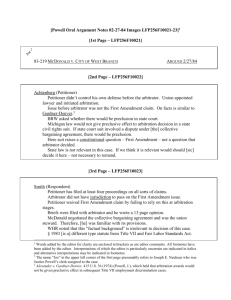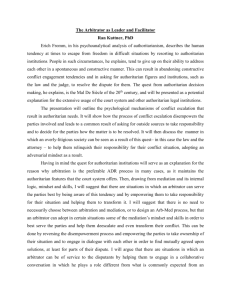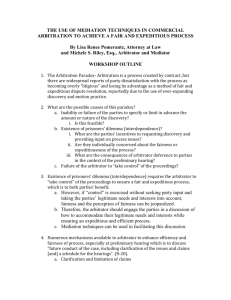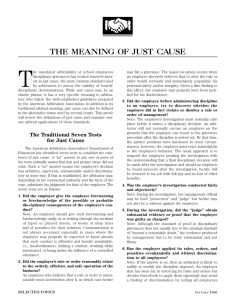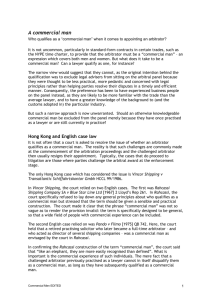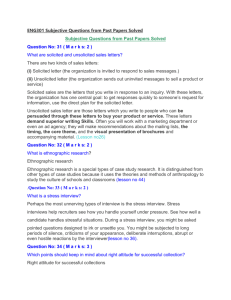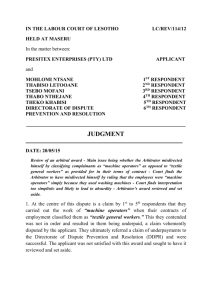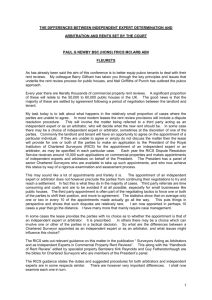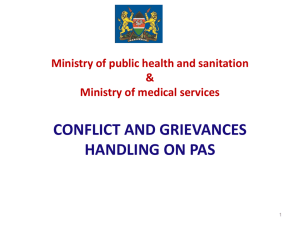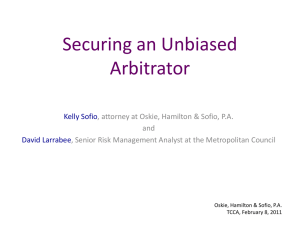PowerPoint Slides
advertisement
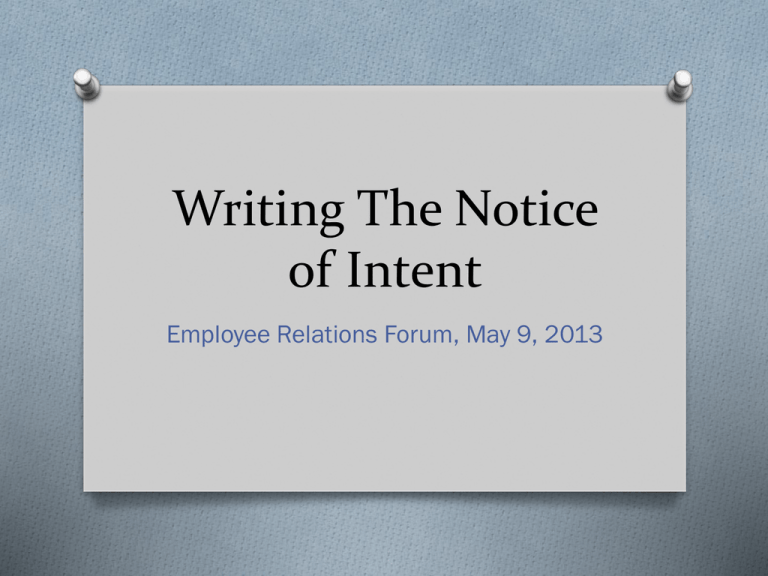
Writing The Notice of Intent Employee Relations Forum, May 9, 2013 The Task… To write a factual, logical, and effective notice of proposed disciplinary action that will be easily understood by a third party neutral. Organization of the Document Introduction • Purpose of Notice (proposed disciplinary action) • Charges or basis for proposed disciplinary action Organization of the Document (Continued) Facts • Employee history (classification and tenure) (Optional) Brief description of employee duties • Detailed description of factual basis for each charge Where appropriate, a statement that a violation of a particular charge would in itself support imposition of the proposed discipline Organization of the Document (Continued) Closing • Closing argument, i.e., Statement of how proposed discipline was determined Previous related discipline Impacts on department or work unit (if appropriate) Why this discipline is necessary Organization of the Document (Continued) Closing –Standard Language • Right to appeal • Right to representation • Date and location of Skelly hearing • Person to contact • Ability to respond in writing • Statement of appeal right if proposed discipline becomes final • Warning against retaliation or intimidation Content Considerations • Description of event must be factual, not opinion Description should be comprehensive to support proposed disciplinary action Based on the events or circumstances rather than the process Content Considerations (Continued) • Include everything the proposed action is based on (Omissions can’t be used later) Content Considerations (Continued) • The body of the letter should refer to the attachments Attachments - summarized not regurgitated Witness statements – summarized not paraphrased Detailed charts & graphs attachments Content Considerations (Continued) • Do not use acronyms that the arbitrator is not familiar with • Stick to the point Keep document as clear and concise as possible Do not include gratuitous information Writing Tips (Continued) Arbitrators read hundreds of Skelly notices each year. If a document is difficult to follow, it results in the following reactions: • Upsets arbitrator which may cause him to disregard your arguments • Makes the arbitrator think you don’t have sufficient grounds for discipline • Makes the arbitrator wonder if you are qualified to effectively impose discipline • Makes it easier for an arbitrator to justify “a split baby” decision The Arbitrator’s Perspective Develop a sound understanding of your case • Burden of proof on the Employer • Conduct a good and thorough investigation • Understand the issues involved with the proposed disciplinary action from both sides The Arbitrator’s Perspective (Continued) Creating the document • Tell a compelling story • Look at the case from the arbitrator’s perspective • Define acronyms the first time they are presented in the document • Don’t assume the arbitrator will read the attachments • Off duty conduct – define the nexus to the job The Arbitrator’s Perspective (Continued) Why settle? • Sometimes it just makes sense • Sometimes you can avoid going to arbitration at all, if you are willing to compromise The Arbitrator’s Perspective (Continued) Why employers lose • Control of witnesses • Gray areas – room for interpretation • Poor investigations • Arbitrators sometimes make bad decisions Case Study Discussions Thank you for attending today’s ER Forum session May 9, 2013

